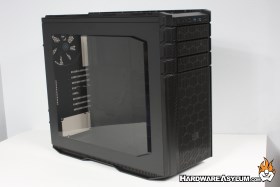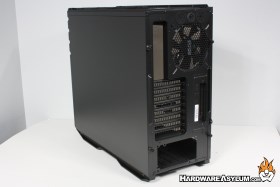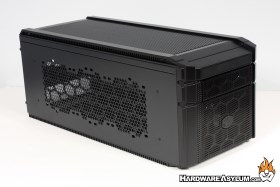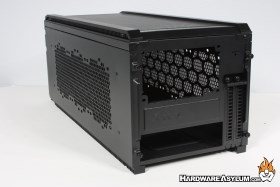Cooler Master HAF Stacker 935 Case Review
Author: Dennis GarciaCase Layout and Features
HAF Stacker 935 is a case system made up of two parts, HAF 925 and HAF 915. The HAF 925 (mid-tower) is the main chassis that will support full sized motherboards up to Extended ATX. You will find an extremely large, and shaded, side window along the left side and metal mesh along the top and front. A common feature on Cooler Master cases is panel stamping to give you more internal volume. Normally a window and fans are situated in the raised area however this case maximizes the side panel alowing nothing to hide.
Turning the HAF 925 around exposes a typical Cooler Master chassis layout with eight expansion slots, single 140mm exhaust fan and a single vertical expansion slot for an additional breakout panel or fan controller.
You will find cable and hose ports located above the exhaust fan and the distinct absence of any embossing along the back panel. The absence of panel embossing is quite strange given that the extra room helps with cable routing and also makes the case panels look event. On the positive we do like how this case comes with eight expansion slots enabling you to support 4-way GPU configurations and generally have more room to run hoses and cables.
The HAF 915 is the second part to the HAF Stacker and is your typical SFF Mini-ITX chassis. It comes with a single external 5.25” drive bay and a perforated side panel supporting three 120mm case fans.
Flipping the 915 around shows a typical Mini-ITX setup with two vertical expansion slots and a top mounted PSU. The same perforated side panel can be found on the opposite side accentuating and option to have a ton of airflow across this case node.
Of course both of these case sections can be used independent of each other and come with allowances for everything a computer needs, assuming you are ok with a few missing components. But, the real reason these components exist is because they can be stacked together to form one single unit.
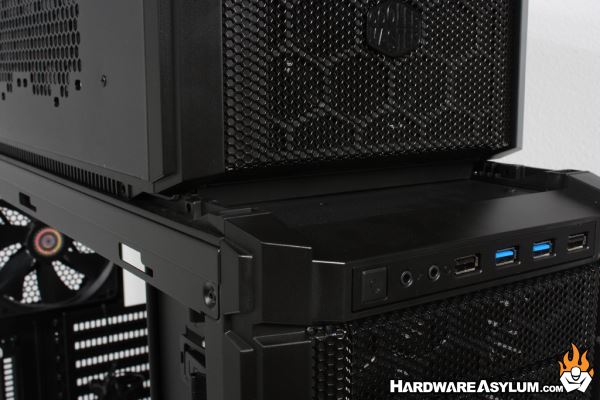
As the above photo indicates the sections slide together along a set of plastic rails. This locks the two sections together and is actually quite sturdy.

